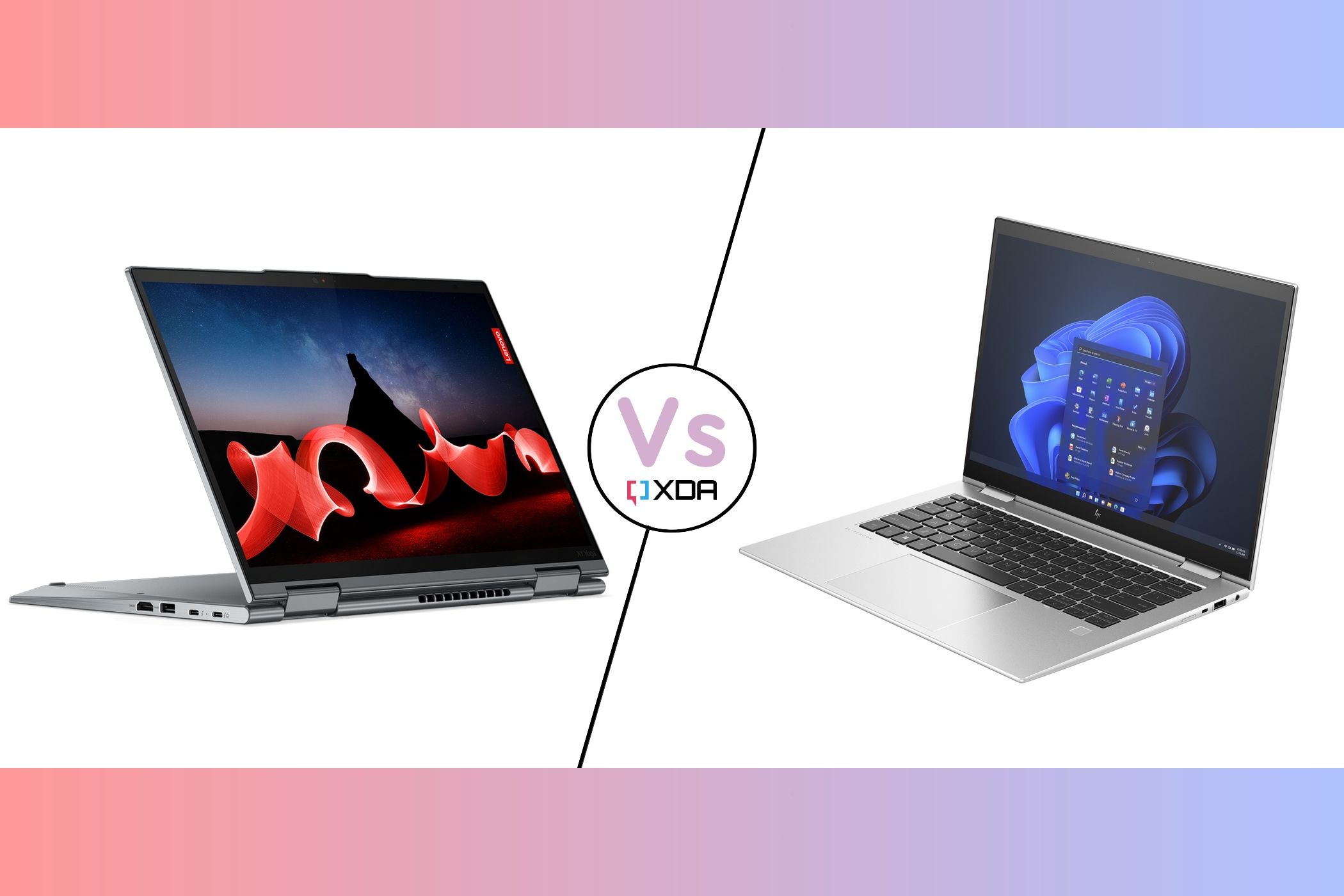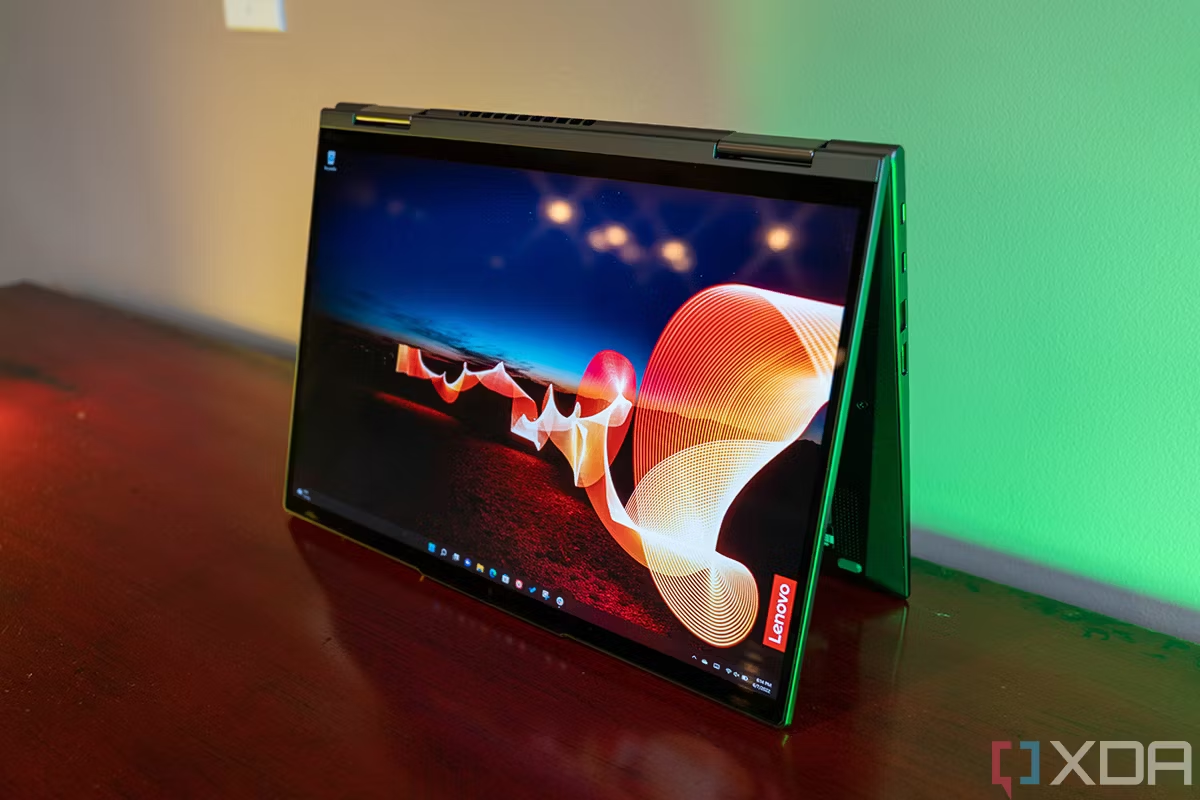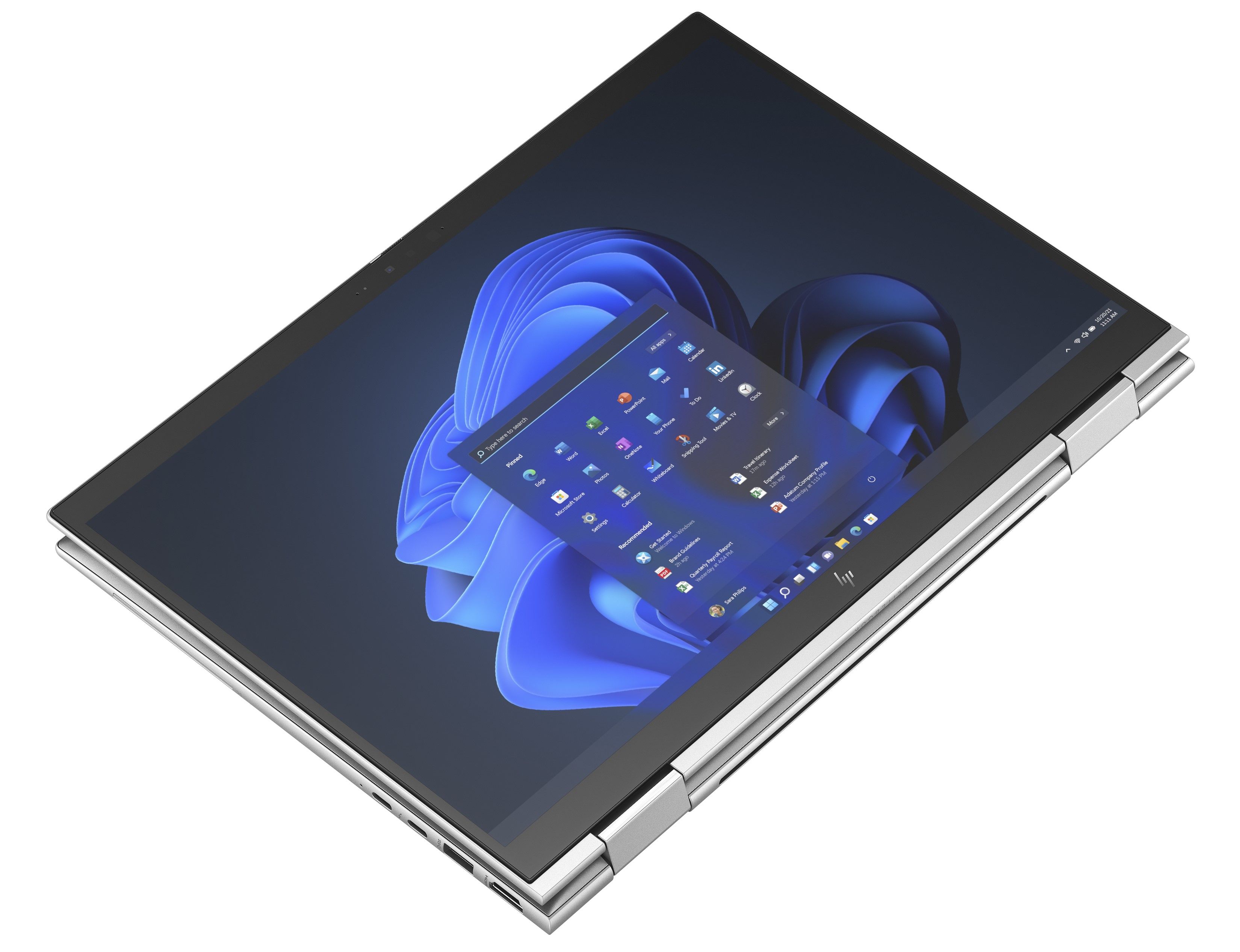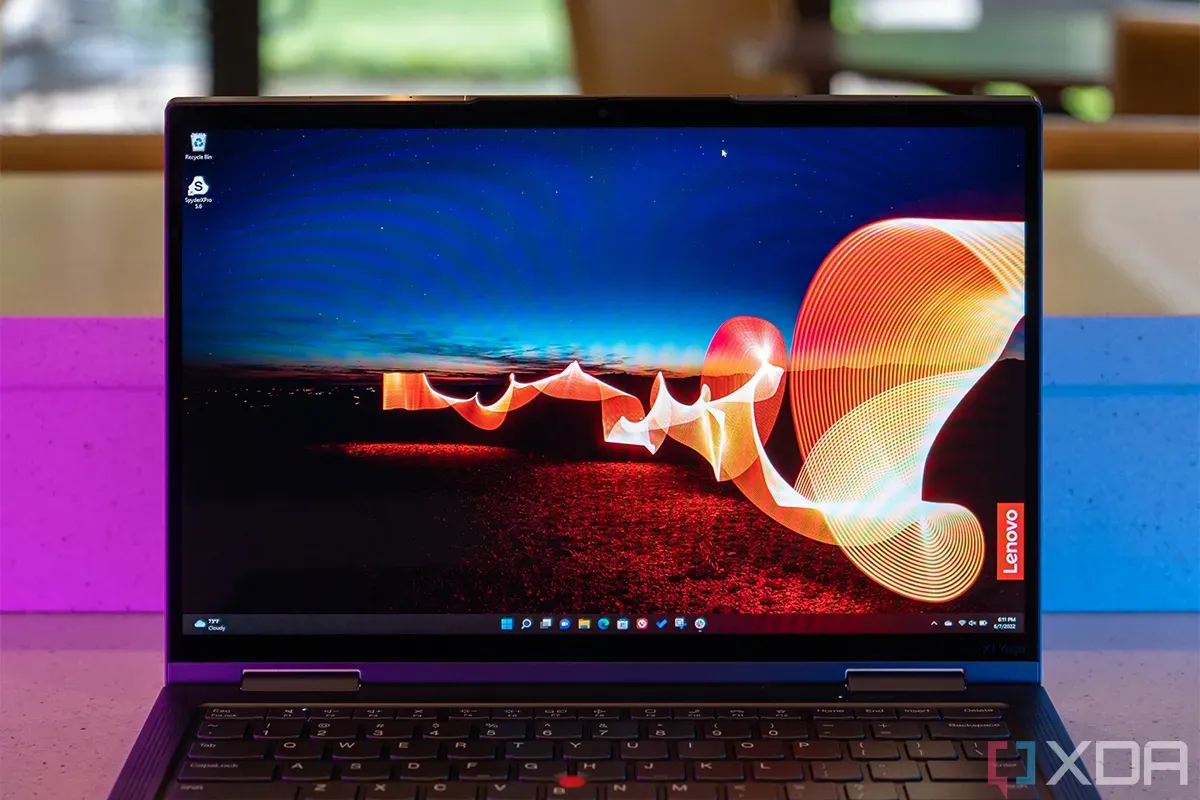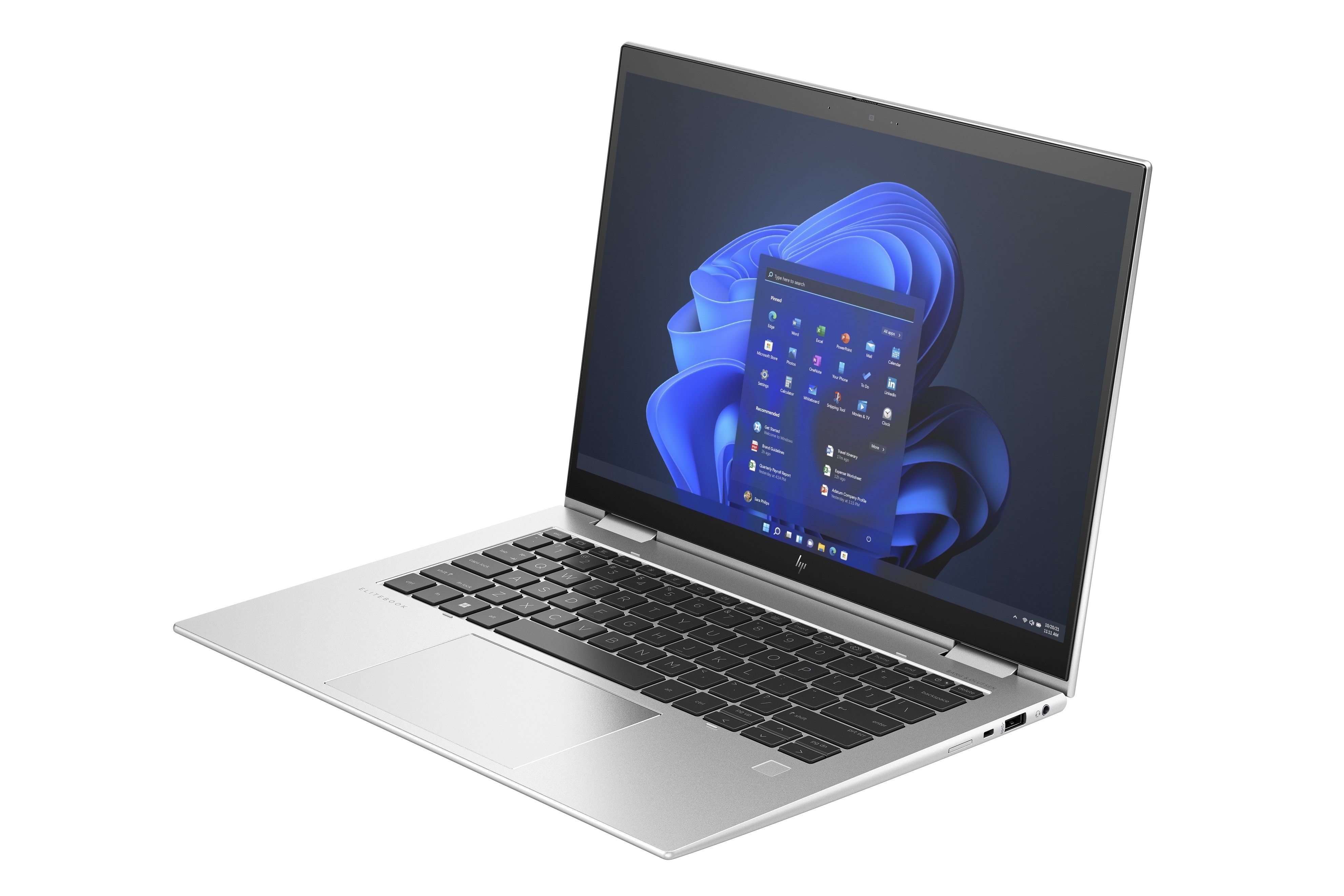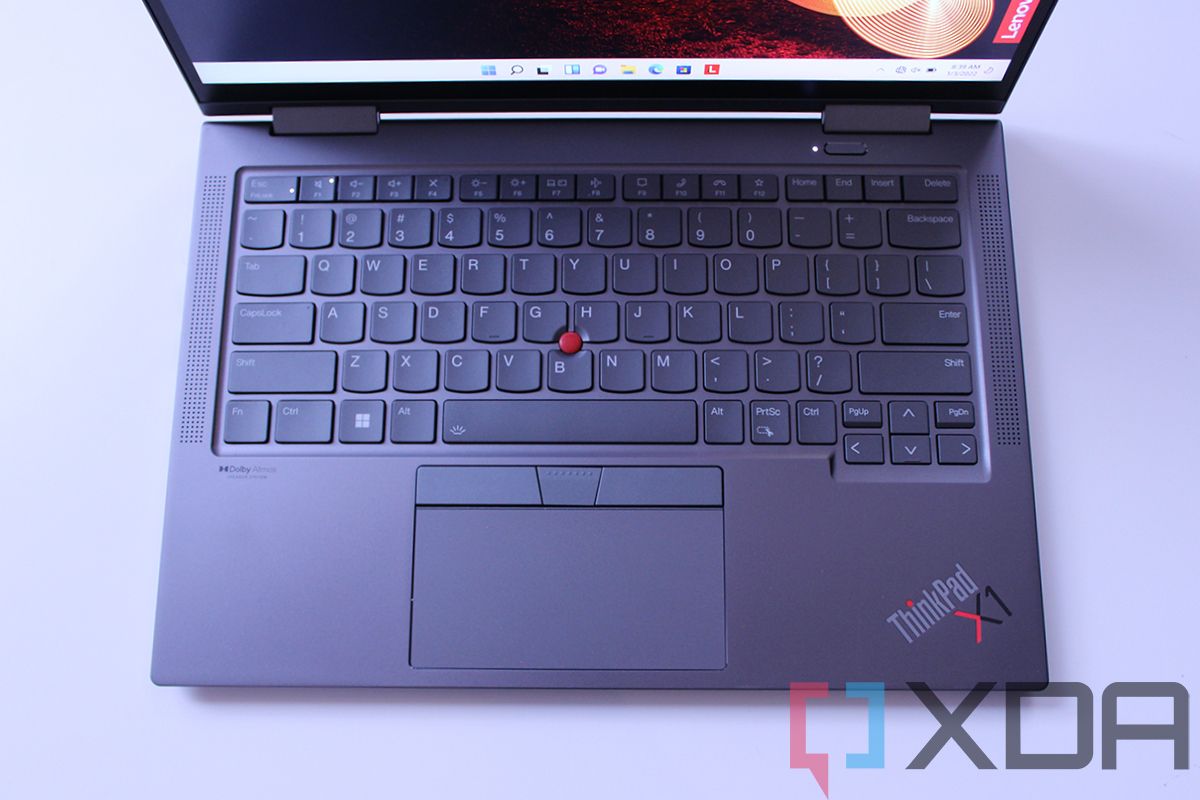Quick Links
Lenovo makes some of the most well-known business laptops on the market, and the ThinkPad X1 Yoga Gen 8 is the company's flagship as far as convertibles go. It's arguably the best laptop in this space, but that doesn't mean there isn't strong competition. The HP Elite x360 1040 G10 is a great example, offering great specs and a lightweight design that can rival the Lenovo ThinkPad X1 Yoga. If you're looking to buy a new business laptop for yourself or your workforce, these are two laptops worth considering, and we're here to help you choose between them.
Lenovo ThinkPad X1 Yoga Gen 8 vs HP Elite x360 1040 G10: Price and availability
Lenovo introduced the ThinkPad X1 Yoga Gen 8 right at the end of 2022, but that was only an announcement. Availability isn't set until April 2023 and will start at $1,859, which is higher than previous models due to the rising production costs. However, you can expect that price to fluctuate a lot, which tends to happen with business laptops. Plus, Lenovo often offers discounts on its devices through its official website.
Similarly, HP introduced the Elite x360 1040 G10 during CES 2023 but that laptop is also not available to buy yet. HP is less specific in regard to launch details, but you can expect it to be available at some point this spring. Pricing has yet to be announced, though the previous model started at $1,969. Like Lenovo, you can expect prices to change frequently due to sales in the months following the launch. Because these are business laptops, it's also worth noting that many people will buy them through business channels that offer all kinds of deals on bulk purchases, so the price will always vary.
Lenovo ThinkPad X1 Yoga Gen 8 vs HP Elite x360 1040 G10: Specs
|
Lenovo ThinkPad X1 Yoga Gen 8 |
HP Elite x360 1040 G10 |
|
|---|---|---|
|
Operating system |
|
|
|
CPU |
|
|
|
Graphics |
|
|
|
Display |
|
|
|
Storage |
|
|
|
RAM |
|
|
|
Battery |
|
|
|
Ports |
|
|
|
Audio |
|
|
|
Camera |
|
|
|
Windows Hello |
|
|
|
Connectivity |
|
|
|
Color |
|
|
|
Size (WxDxH) |
12.38 x 8.75 x 0.61 inches (314.4 x 222.3 x 15.53mm) |
12.4 x 8.89 x 0.71 inches (315 x 225.8 x 17.92mm) |
|
Weight |
3 pounds (1.38kg) |
<2.98 pounds (1.33kg) |
|
Starting price |
$1,859 |
TBA |
Performance: Intel P-series is faster at the expense of battery life
You'd be forgiven for looking at the spec sheet above and thinking the two laptops are about the same, but there are actually some huge performance differences. The Lenovo ThinkPad X1 Yoga Gen 8 is packing 13th-generation Intel Core P-series processors, while the Elite x360 is only available with U-series processors. P-series processors have a base TDP of 28W, while the U-series chips have a base TDP of 15W. That means the processors in Lenovo's laptops will use significantly more power, though they can get noticeably faster.
The top-tier Intel Core i7-1370P has 14 cores and 20 threads, with boost speeds up to 5.2GHz. Meanwhile, the Intel Core i7-1365U, the fastest U-series model, has 10 cores and 12 threads, though the maximum boost speed is similar. We don't have benchmark numbers for these processors yet, but we can look at the previous generation to get an idea of the differences between the U series and P series.
|
Intel Core i5-1235U (average) |
Intel Core i5-1240P (average) |
Intel Core i7-1265U (average) |
Intel Core i7-1280P (average) |
|
|---|---|---|---|---|
|
Geekbench 5 (single/multi-core) |
1,433 / 5,667 |
1,420 / 6,868 |
1,530 / 6,114 |
1,520 / 8,642 |
Of course, the downside to this added performance is power consumption, which impacts battery life. The Lenovo ThinkPad X1 Yoga does have a larger 57Whr battery, but there's a good chance the Elite x360 1040 will last longer on a charge with the 51.3Whr battery.
As for the rest of the specs, the ThinkPad X1 Yoga does have the option for more RAM, going up to 64GB compared to HP's 32GB, though it's unlikely most users will need that much. For storage, both models come with up to a 2TB PCIe 4.0 SSD.
Display: The ThinkPad X1 Yoga has an OLED option
In terms of size and format, both laptops have a 14-inch panel with a 16:10 aspect ratio, which is ideal for productivity, and the base models start with Full HD+ (1920 x 1200) resolution. The ThinkPad X1 Yoga does have a benefit with a higher peak brightness, but HP has the advantage with its Sure View Reflect panel, which is brighter than Lenovo's Privacy Guard model.
However, the biggest differences are in the top-tier configurations for each laptop. The Lenovo ThinkPad X1 Yoga Gen 8 is available with a stunning Ultra HD+ (3840 x 2400) OLED panel, which delivers vibrant colors and true blacks for a fantastic viewing experience. It's also extremely sharp, arguably more than needed for a display of this size, but you can't deny it looks great.
On the other hand, the HP Elite x360 1040 G10 gives you the option for a Quad HD+ (2560 x 1600) IPS display, which isn't quite as impressive visually. However, this panel has a 120Hz refresh rate, which makes everything onscreen appear smoother and more pleasant whenever there's motion. It's hard to argue against an OLED display, but the smooth refresh rate can be nice to have. And if you want to do some gaming on the side with an external GPU or Nvidia GeForce Now, this may actually be the better option.
The HP Elite x360 has a 5MP webcam, and it's one of the best on any laptop.
Where HP is definitely ahead of Lenovo is the webcam. All of HP's premium laptops now come with 5MP webcams, and they're some of the best you can find on a laptop. Both cameras support 1080p video, but HP will look better due to the higher resolution sensor and the fact that it can crop into the frame to enable face tracking. The two laptops also support Windows Hello facial and fingerprint recognition.
As for audio, both laptops should offer a solid experience, though neither of them is likely to blow you away.
Design: Both are silver, but they're not the same
Where these laptops differ the most is arguably in their designs. The Lenovo ThinkPad family has an iconic design language with a black chassis and red accents, but the X1 Yoga swaps out the black for a shade of silver called Storm Grey. Otherwise, you still get the red accents you're used to, as well as a red TrackPoint and duplicate mouse buttons above the touchpad, which ThinkPad fans will like, but others might find visually unappealing.
HP laptops have a more modern design language. It uses a lighter shade of silver, simply called Natural Silver, and there are no accents to speak of, so it's even more subdued. It's arguably boring, but it does feel a bit more contemporary, and since there's no TrackPoint or mouse buttons, you get more space for the touchpad, which is always a good thing.
In terms of portability, the two laptops aren't that far off. HP's laptop is slightly lighter, but Lenovo's is thinner and smaller overall. Most likely, the reason HP's laptop is lighter is that there's a smaller battery in the base model, so there's a trade-off.
Ports and connectivity: You can't go wrong either way
Business laptops are known for many things, and arguably the most important is the large array of ports. Both of these laptops deliver on that front, featuring two Thunderbolt 4 ports, two USB Type-A ports, HDMI, and a 3.5mm combo audio jack. Aside from being in different positions, the only difference is that the HP Elite x360 can be configured with a Smart Card reader, which can be useful for some businesses for authentication.
The similarities continue with wireless connectivity; both laptops support Wi-Fi 6E and Bluetooth 5. While each company mentions different Bluetooth revisions, these are most likely the same cards, which support Bluetooth 5.3. Still, Windows 11 support is limited to Bluetooth 5.1, which is why you'll sometimes see these discrepancies. The two laptops also have optional cellular connectivity, with your choice of 4G LTE or 5G.
Lenovo ThinkPad X1 Yoga Gen 8 vs HP Elite x360 1040 G10: Which should you buy?
While there's a lot these two laptops have in common, and you could justify going either way, there are good reasons to prefer one over the other. The ThinkPad X1 Yoga Gen 8 may be better if you want more performance for multitasking and more demanding tasks, and it's also got that fantastic OLED display if you have the money to splurge on it. Of course, if you're a long-time ThinkPad fan, you're likely to also appreciate this design a lot more.
On the other hand, the HP Elite x360 1040 G10 will potentially have better battery life, particularly if you choose the larger battery, thanks to the U-series processors. It's also better if you want something with a more modern design or if you want a great laptop webcam, which is an area where HP is ahead of pretty much the entire competition. There are also more niche things in its favor, like the HP Sure View Reflect display or the 120Hz option.
It's ultimately up to you to make that decision, but either way, you can't buy these laptops yet, so you have time to think it over. We'll be sure to have purchase links below as soon as they're available.

